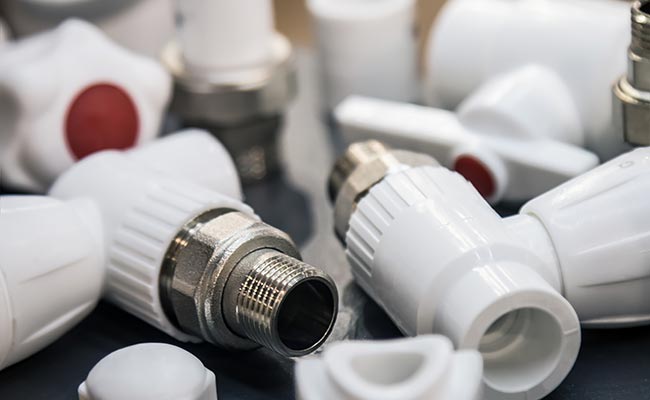You need a valve that’s stronger than a single piece but not as pricey as a three-piece. Choosing the wrong one means overpaying or getting a valve you can’t repair when it matters.
A two-piece ball valve consists of two main body parts that screw together, trapping the ball and seals inside. This design is stronger than a one-piece valve and allows for repair, though it must first be removed from the pipeline.
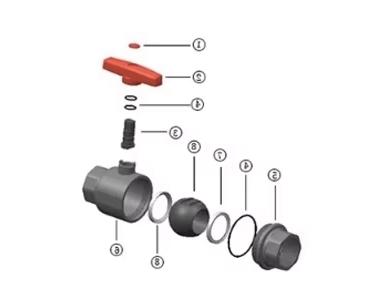
The two-piece ball valve is a true workhorse in the plumbing world. It’s one of the most common types I discuss with my partners, like Budi, a purchasing manager in Indonesia. His customers, who are mostly general contractors and distributors, need a reliable, cost-effective solution for everyday jobs. The two-piece design hits that sweet spot perfectly. It offers a significant upgrade in strength and serviceability over the most basic valves without the higher cost of complex industrial models. To really understand its value, you have to see where it fits in the big picture.
What is a two-piece valve?
You can see the seam where the valve body is joined, but what does that mean? Understanding its construction is key to knowing if it’s the right choice for your system’s long-term health.
A two-piece valve features a main body and a second piece, the end connector, that screws into it. This threaded connection houses the ball and seats, making the valve serviceable and more resistant to pressure than a one-piece design.
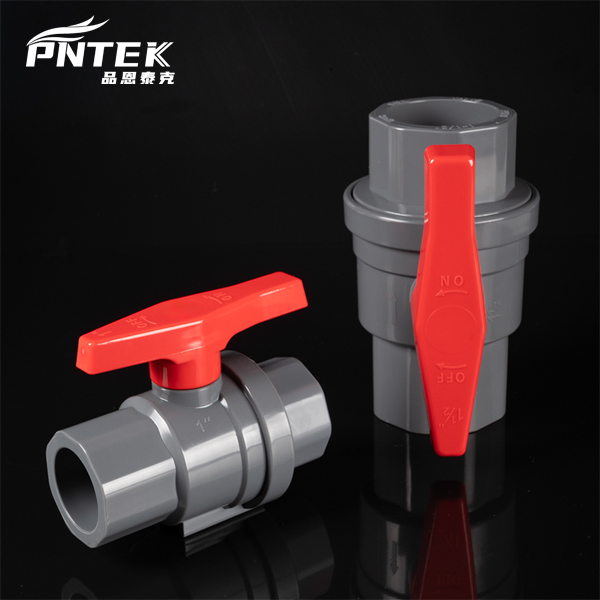
The construction of a two-piece valve is its main feature. Imagine the valve body is made in two sections. The larger section holds the stem and handle, while the smaller section is essentially a threaded cap. When they are screwed together, they clamp down on the ball and the soft seats (usually made of PTFE) that create the seal. This threaded body design is much stronger than a one-piece valve, where the ball is inserted through a smaller opening, often requiring a smaller ball (a reduced port). The two-piece construction allows for a larger, “full port” ball, meaning the hole in the ball is the same size as the pipe, leading to better flow with less pressure loss. If a seal ever wears out, you can unscrew the body, replace the parts, and put it back into service. It’s a great middle-ground for many of Budi’s clients who need a valve that is both tough and repairable.
What is the difference between a type 1 and type 2 ball valve?
You hear terms like “Type 1″ and “Type 21″ but aren’t sure what they mean. Choosing based on these terms without understanding them could mean missing out on key safety features.
These terms don’t refer to the body construction (like two-piece) but to design generations, usually of true union valves. “Type 21″ is industry shorthand for a modern design with enhanced safety and usability features.
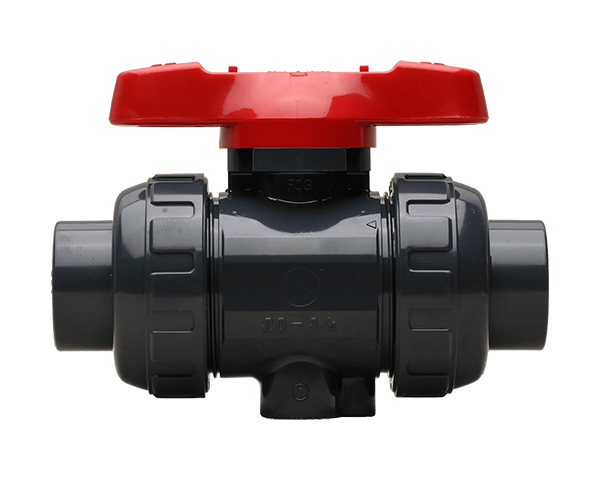
It’s really important not to confuse body style with these “type” numbers. A “two-piece” valve describes how the body is physically built. Terms like “Type 21,” on the other hand, describe a specific set of modern features, and they are almost always found on three-piece true union valves. I have to clarify this for Budi’s team sometimes. A customer might ask for a “Type 21 two-piece valve,” but those features are part of a different valve class. The most important feature of the Type 21 style is the block-safe union nut, which prevents the valve from being accidentally unscrewed and opened while the system is under pressure. This is a critical safety feature. They also typically include double stem O-rings for better handle sealing and a built-in mounting pad for adding an actuator. These are premium features for the most demanding jobs, while a standard two-piece valve is the reliable choice for general-purpose work.
What is a two-way ball valve used for?
You simply need to stop or start the flow of water. With all the complex valve types available, it’s easy to overcomplicate the solution and overspend on unnecessary features for the job.
A two-way ball valve is used for basic on/off control in a straight pipeline. It has two ports—an inlet and an outlet—and provides a simple, reliable way to shut off flow for countless applications.
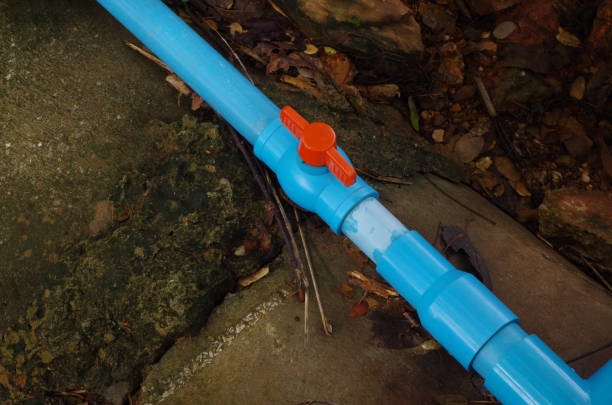
A two-way valve is the most common type of valve in existence. It does one job: it isolates the flow. Think of it as a light switch for water—it’s either on or off. The vast majority of ball valves you will ever see, including nearly all two-piece valves, are two-way valves. They are the backbone of plumbing systems everywhere. You use them to shut off the water to a sprinkler zone, to isolate a piece of equipment for repair, or as a main shutoff for a building. Their simplicity is their strength. This is different from multi-port valves, like a three-way valve, which are designed to divert flow, like sending water down one path or another. For 95% of the jobs Budi’s customers tackle, a simple, strong, two-way ball valve is the right tool. The two-piece design is a fantastic and very common choice for this fundamental task.
What is the difference between a one piece and three-piece ball valve?
You’re choosing between the cheapest valve and the most expensive. Making the wrong choice means you either can’t fix a problem or you’ve wasted money on features you’ll never use.
The key difference is serviceability. A one-piece valve is a sealed, disposable unit. A three-piece valve can be easily repaired while still connected to the pipe. The two-piece valve sits in the middle.
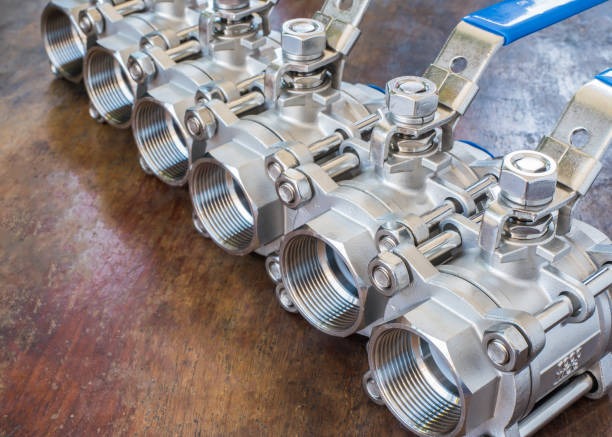
Understanding the one-piece and three-piece options really shows why the two-piece valve is so popular. A one-piece valve is made from a single body, making it inexpensive but impossible to open for repairs. It’s a “use and replace” item best for non-critical lines. At the other end is the three-piece valve. It has a central body and two separate end connectors held together by long bolts. This design lets you remove the entire center section of the valve to replace seals without ever cutting the pipe. This is the top choice for industrial plants or commercial pools where downtime is very expensive. The two-piece valve offers the perfect compromise. It’s more robust and usually has better flow than a one-piece, and it’s repairable. While you do have to remove it from the line to fix it, that’s a perfectly acceptable trade-off for its lower price compared to a three-piece valve.
Valve Body Type Comparison
| Feature | One-Piece | Two-Piece | Three-Piece |
|---|---|---|---|
| Serviceability | None (Disposable) | Repairable (Offline) | Easily Repairable (Inline) |
| Cost | Lowest | Medium | Highest |
| Strength | Good | Better | Best |
| Best For | Low-cost, non-critical lines | General purpose plumbing | Critical lines with frequent maintenance |
Conclusion
A two-piece ball valve is a reliable, repairable workhorse. It offers a perfect balance of strength and cost between the disposable one-piece and the high-service, three-piece designs for most applications.
Post time: Jul-23-2025



